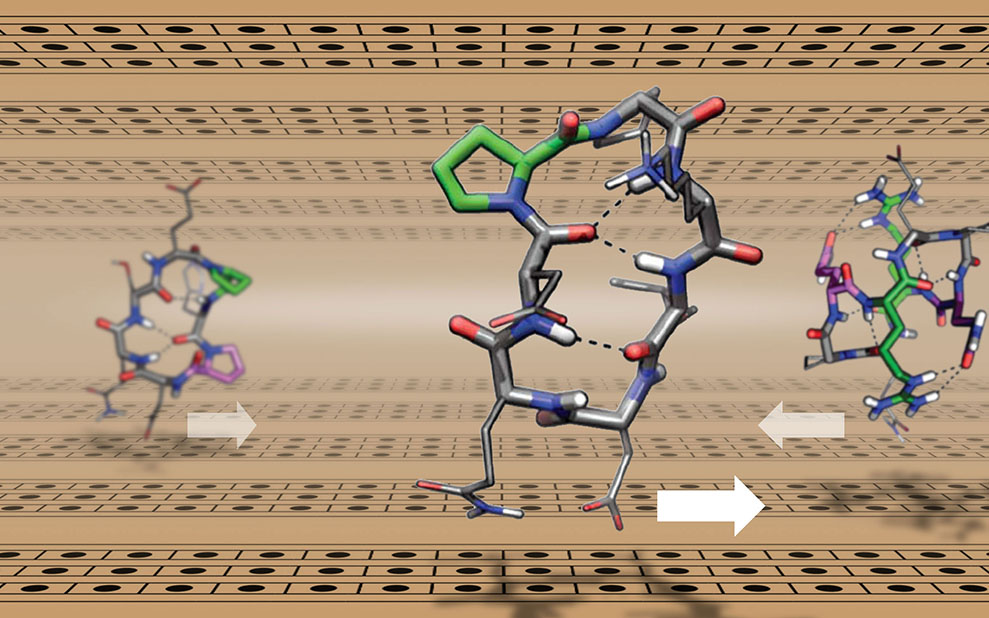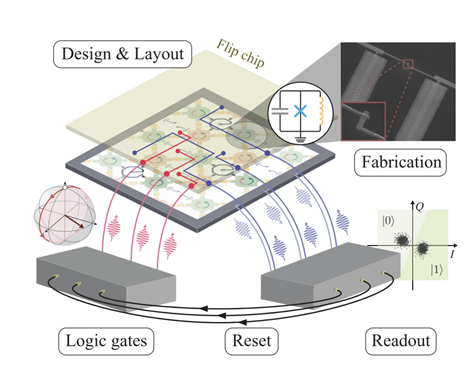More Designer Peptides, More Possibilities
A combined experimental and modeling approach contributes to understanding small proteins with potential use in industrial, therapeutic applications.

The Science
With their tiny scaffolds of atoms, peptides hold the promise of creating catalysts for biofuels, capturing hazardous waste, and delivering new therapies to improve health. While nature offers a few peptides with the perfect characteristics for such purposes, scientists have been attempting to design peptides more precisely. The process has been one of slow trial-and-error. Now a team of scientists has blended complex calculations with an award-winning ion analysis technology to rapidly design and test peptides.
The Impact
The approach expanded the number of “peptides of potential” from only a handful to more than 200. Thus, it vastly increased the variety of custom-designed biological materials for industrial and medical applications. The approach also provided a platform through which scientists can test additional peptides much more rapidly than before. Scientists can use the platform for other molecules as well.
Summary
Scientists from the University of Washington, Stanford University, and the Pacific Northwest National Laboratory (PNNL) created a computational model that allowed them to simulate various types of peptides and identify which were stable enough for use as scaffolding for industrial and medical purposes. To evaluate the model’s calculations experimentally, the team then created the most promising peptides and analyzed them using SLIM (structures for lossless ion manipulations) at the Environmental Molecular Sciences Laboratory (EMSL), a Department of Energy Office of Science user facility. SLIM is a versatile, high-throughput, and ultrahigh sensitivity and resolution ion analysis technology. It can identify similar molecules with different structures in a small amount of sample. A team of EMSL and PNNL scientists developed SLIM, which won a prestigious 2017 R&D 100 award, which honors the most impactful technologies of the year. Using SLIM, the team determined which designed peptides were stable enough for industrial and medical applications and how changes in amino acids, the building blocks of peptides, affected the potential use of the peptide. The approach allowed the scientists to accomplish the work in hours instead of days. The resulting comprehensive library of designed peptides will serve as a foundation for future efforts.
Contact
Program Manager
Paul Bayer
Department of Energy, Office of Science, Biological and Environmental Research
(301) 903-5324
Principal Investigators
David Baker
University of Washington
dabaker@uw.edu
Yehia Ibrahim
Pacific Northwest National Laboratory
Yehia.Ibrahim@pnnl.gov
Funding
This work was supported by the Department of Energy’s (DOE’s) Office of Science, Office of Biological and Environmental Research, including support of the Environmental Molecular Sciences Laboratory (EMSL), a DOE Office of Science user facility; National Institutes of Health; Washington Research Foundation; American Cancer Society; Pew Latin-American Fellowship; Howard Hughes Medical Institute; and the Pacific Northwest National Laboratory’s Laboratory-Directed Research and Development Program. Computing resources were provided by Rosetta@Home; Hyak supercomputer at the University of Washington; XStream, supported by the National Science Foundation Major Research Instrumentation Grant; Amazon Web Services Credits for Research Grant; Innovative and Novel Computational Impact on Theory and Experiment (INCITE) program; and Argonne Leadership Computing Facility, a DOE Office of Science user facility.
Publications
P. Hosseinzadeh, G. Bhardwaj, V.K. Mulligan, M.D. Shortridge, T.W. Craven, F. Pardo-Avila, S.A. Rettie, D.E. Kim, D.A. Silva, Y.M. Ibrahim, I.K. Webb, J.R. Cort, J.N. Adkins, G. Varani, and D. Baker, “Comprehensive computational design of ordered peptide macrocycles.” Science 358, 1461 (2017). [DOI: 10.1126/science.aap7577]
Related Links
Environmental Molecular Sciences Laboratory science highlight: More designer peptides, more possibilities
EurekAlert news story: Computational strategies overcome obstacles in peptide therapeutics development
Wikipedia article: Structures for lossless ion manipulations
Pacific Northwest National Laboratory news release: PNNL wins seven R&D 100 Awards
Pacific Northwest National Laboratory YouTube video: SLIM: A big turn for ion separation
Highlight Categories
Performer: University , DOE Laboratory , SC User Facilities , ASCR User Facilities , ALCF , BER User Facilities , EMSL
Additional: Collaborations , Non-DOE Interagency Collaboration



